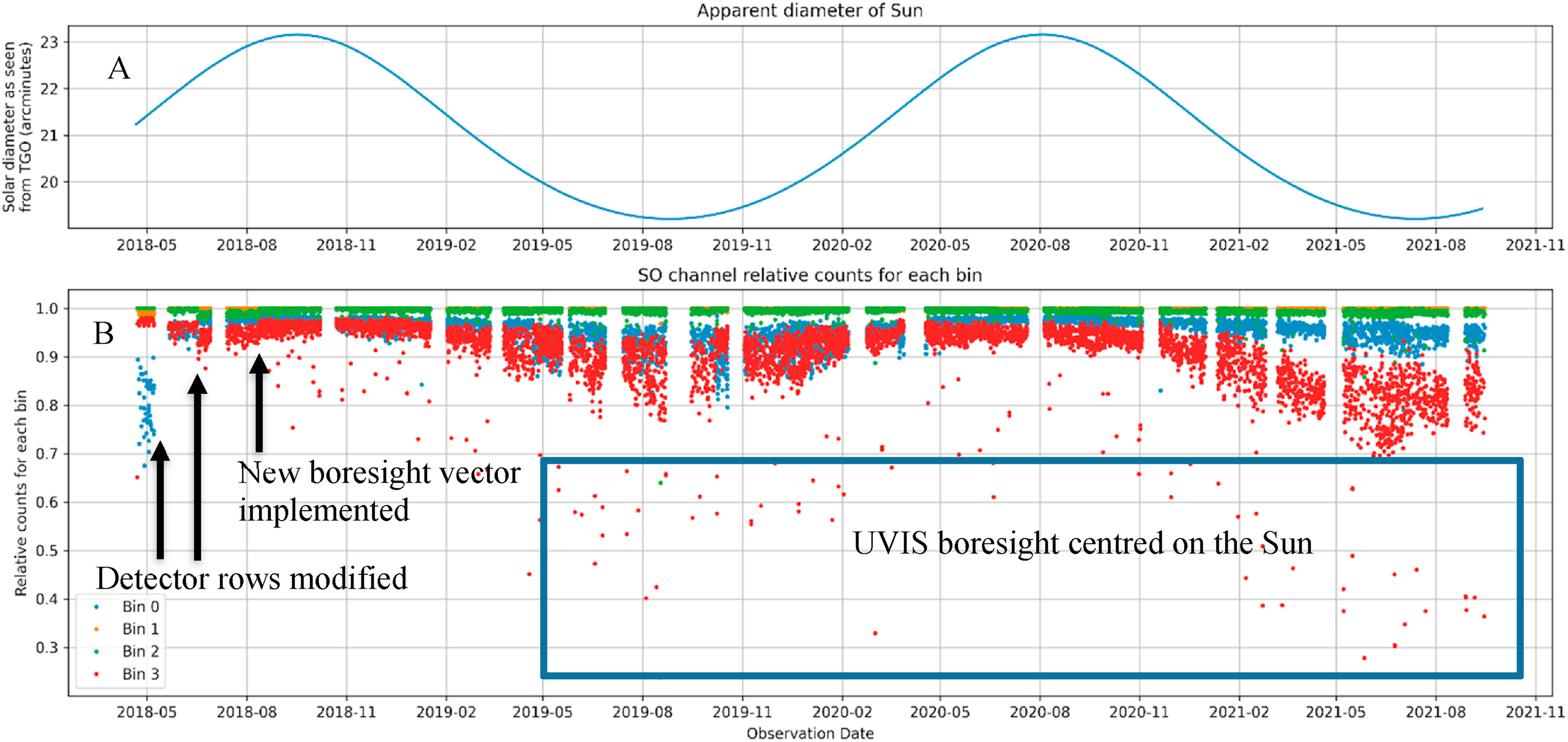PSS (2021) https://doi.org/10.1016/j.pss.2021.105411
Ian R. Thomas and Shohei Aoki and Loic Trompet and Séverine Robert and Cédric Depiesse and Yannick Willame and Justin T. Erwin and Ann Carine Vandaele and Frank Daerden and Arnaud Mahieux and Eddy Neefs and Bojan Ristic and Laszlo Hetey and Sophie Berkenbosch and Roland Clairquin and Bram Beeckman and Manish R. Patel and Jose Juan Lopez-Moreno and Giancarlo Bellucci.
Nadir and Occultation for MArs Discovery (NOMAD) is a 3-channel spectrometer suite that is currently orbiting Mars onboard ESA's ExoMars Trace Gas Orbiter, measuring the composition of the Martian atmosphere in unprecedented detail. Of the three channels, two operate in the infrared: the Solar Occultation (SO) channel observes gas species in the 2.2–4.3 μm spectral region in solar occultation mode, while the Limb, Nadir and Occultation (LNO) channel observes in the 2.2–3.8 μm spectral region and can operate in limb-, nadir- and solar occultation-pointing modes. The Ultraviolet–VISible (UVIS) channel operates in the UV–visible region, from 200 to 650 nm.
Both infrared channels have a spectral resolution typically an order of magnitude better than previous instruments orbiting Mars, to measure molecular absorption lines and therefore determine the abundances of constituents of the Martian atmosphere and the processes that govern their distribution and transport. To maximise the full potential of the instrument, a wide range of calibration measurements were made prior to launch and continue to be made in-flight. This work, part 1, addresses the aspects of the SO channel calibration that are not covered elsewhere, namely: the SO channel ground calibration setup, boresight pointing vector determination, detector characterisation, detector illumination pattern and saturation levels, and an investigation of the instrument line shape. An accompanying paper, part 2, addresses similar aspects for LNO, the other infrared channel in NOMAD (Thomas et al., 2021, this issue).

(A) The angular extent of the Sun varies due to the elliptical nature of Mars' orbit, oscillating between 19 and 23 arcminutes. (B) Relative solar signal strength of the four SO channel bins throughout the mission, where the highest signal bin is equal to 1.0. The gaps correspond to occultation-free periods, where the geometry is such that the spacecraft does not occult the planet. Occasionally the UVIS boresight vector is used instead, hence one bin has a lower relative signal. The Sun-Mars distance also affects the relative signal.

